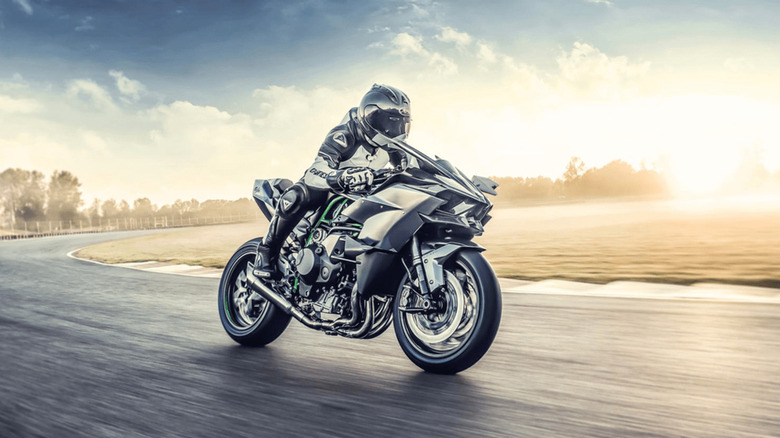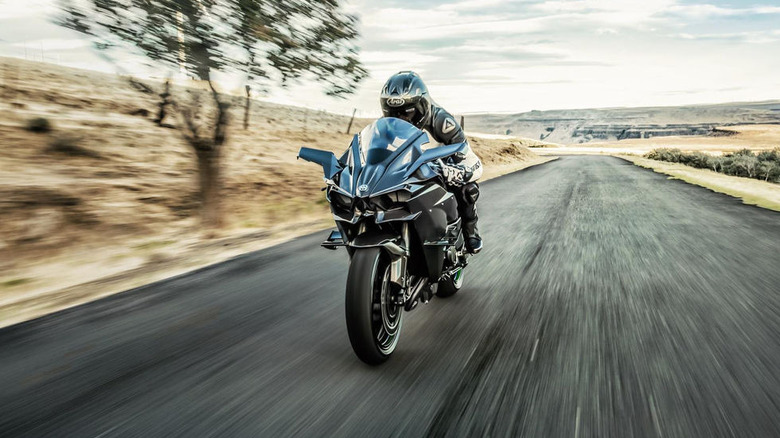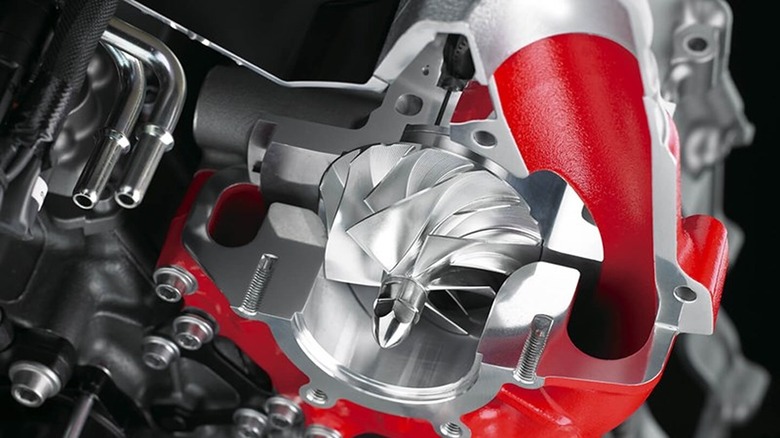Kawasaki H2R Vs Hayabusa: Which Is Faster?
The Kawasaki Ninja H2R and the Suzuki GSX1300R Hayabusa are two of the fastest and most hardcore motorcycles money can buy. The Ninja H2R is the most potent iteration of Kawasaki's Ninja H2 family as a track-only bike and belongs to an elite list of the fastest production motorcycles. Powered by a deliciously potent 998cc supercharged inline-four engine that generates an astounding 310 horsepower and 121 lb-ft of torque, the Ninja H2R has a 205 mph top speed but can reach an unbelievable 249 mph (400 km/h) with a professional rider with ideal track conditions.
Meanwhile, the Suzuki Hayabusa has gained a cult following since breaking through in 1999, capable of hustling to 194 mph to outpace the then-unbeatable Honda Blackbird. Moreover, it could breach the quarter-mile in under 10 seconds. Suzuki upgraded the engine from a 1,298cc four-cylinder to a larger-displacement 1,340 cc power plant when it debuted the second-gen Hayabusa in 2008. The changes unleashed 180 horsepower at 9,500 rpm and 107 lb-ft of torque at 7,500 rpm.
Is the Kawasaki H2R faster than the Suzuki Hayabusa?
The Kawasaki could outrun the Hayabusa, but the Suzuki wouldn't back down without a fight. Equipped with taller gear ratios, the Hayabusa is initially faster in a straight line, rushing from zero to 60 mph in 2.77 seconds. Meanwhile, the Ninja H2R takes 2.93 seconds. It's similar in the quarter-mile rush, with the Hayabusa taking 9.91 seconds at 150 mph compared to the Ninja H2R's 9.76 seconds.
But at that point, the Ninja H2R is just warming up. With its four-cylinder engine capable of spinning to a heady 14,000 rpm (the Hayabusa redlines at 11,200 rpm), the Kawasaki explodes to 180 mph from a standstill in just 11.77 seconds. On the other hand, the Hayabusa takes 16.81 seconds to reach 180 mph, over five seconds slower than the Ninja H2R. Data shows that Hayabusa has an advantage on the street, but the Ninja H2R's explosive top end makes it an essential track weapon.
Supercharger for the win
The Kawasaki Ninja H2R and its lesser-endowed Ninja H2 siblings are the world's first mass-produced motorcycles with a supercharged engine. Motorbikes with forced induction have been around since the 1980s, but they were mainly turbocharged rather than supercharged.
Credit to Honda and its CX500TC for starting the turbocharging trend in production bikes, but the Kawasaki Ninja H2R's supercharged engine is a masterclass of engineering. Developed in-house by Kawasaki Heavy Industries, the Ninja's centrifugal-type blower features a machined, forged aluminum impeller that spins at 130,000 rpm to feed the engine with 200 liters of air per second — the reason why the Ninja H2R scampers like no other superbike.
The supercharger's custom design allows it to compress air more efficiently while reducing heat, negating the need for an intercooler. Moreover, the system utilizes a bespoke planetary gear to transfer the engine power from the crankshaft to the impeller, even when the engine spins to its 14,000 rpm redline.


